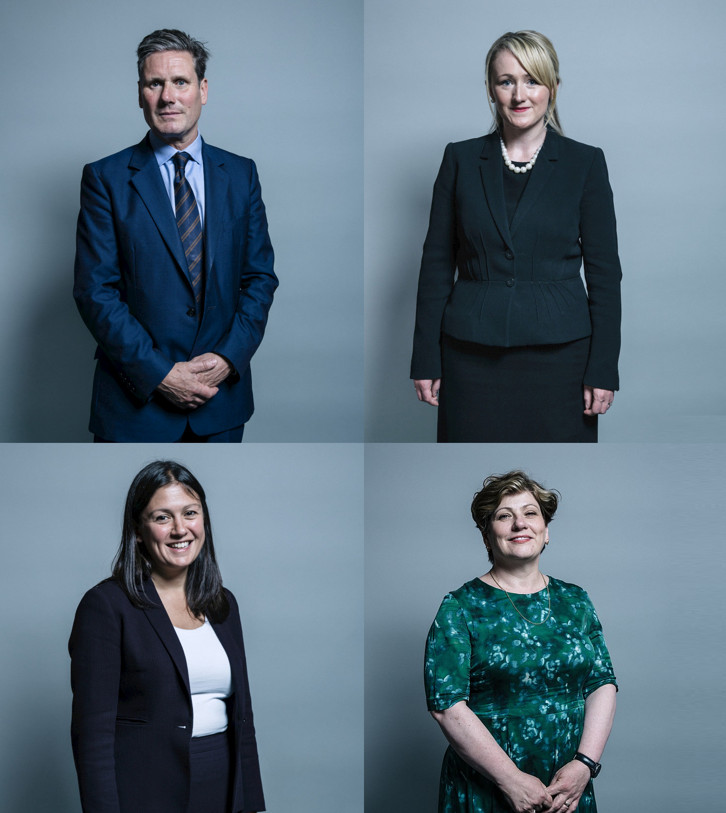 Following their disastrous General Election campaign in 2019, the Labour Party are vey much in ‘picking up the pieces’ mode.
Following their disastrous General Election campaign in 2019, the Labour Party are vey much in ‘picking up the pieces’ mode.
The disastrous reign of Jeremy Corbyn has come to an end after the former leader tendered his resignation, and now the search is on to find his successor.
In the 1990s, Labour used the D:Ream song ‘Things Can Only Get Better’ in the election campaign that Tony Blair would eventually go on to win, and you suspect that sentiment is apt now for a party on its knees.
They lost 60 seats in the election to achieve their lowest number overall since 1935, and at least Corbyn’s replacement has the knowledge that things can’t really get any worse than this.
As Conservatives win biggest majority since 1980s – take a look at our election results map of Britain and find out what’s changed between 2017 to 2019 https://t.co/OxyAW2ZDc4 #GE2019 #BBCelection pic.twitter.com/u9WofbJP8E
— BBC Politics (@BBCPolitics) December 13, 2019
However, the whole party needs a re-think about how it goes about its business. To the backdrop of Brexit, Corbyn was practically anonymous at times, and his EU divorce plan as part of Labour’s manifesto went down as well with voters as the proverbial flatulence in a lift.
There’s nothing wrong with a socialist perspective as such – it takes Labour left of centre, where they belong, but the anti-Semitism row that engulfed the part left Corbyn unelectable and untenable as the party’s leader.
In the wake of Boris Johnson’s firm-handed and, ultimately, right wing leadership, Labour need to refocus themselves as the party of the people, the centrist option, in time for the next General Election, whenever that may be.
Perhaps the Labour leadership battle will reveal such a candidate for the hot seat.
How Does the Labour Leadership Election Work?
Anyone interested in becoming the new Labour leader has to get themselves onto the ballot.
They do that via nominations from the party’s MPs, and those with the most votes are placed in the first round of the contest.
At that point, the candidates need a minimum of 5% support from their party to progress to the second round – at this point, Clive Lewis resigned from the race, and his supporters shifted to Emily Thornberry, which enabled her to scrape through to the second round after being short of the threshold with just ten minutes before the deadline to go.
After Jess Phillips also withdrew from the race, just four nominations are left to fill the Labour hotseat: Keir Starmer, Rebecca Long-Bailey, Lisa Nandy and Emily Thornberry.
When Will the Labour Leadership Election Take Place?
On February 14, the membership ballot will finally close, and all four candidates will enough votes to formally take part in the election – so far, only Starmer and Nandy have achieved this at the time of writing.
On February 21, Labour Party members receive their postal ballots or online voting forms, as specified.
On April 2, voting officially closes and then the winner is announced roughly 48 hours later.
Who are the Candidates and Who Will Win?

Labour Party Leadership Candidates. Official Parliament portraits (combined).
License: Attribution 3.0 Unported (CC BY 3.0)
The Labour Party members that have a vote have one simple question to answer: do they ant genuine change, or do they want to continue down the destructive path laid by Corbyn and co?
The reason that question is of relevance is because Keir Starmer will look to take the party back to its centrist roots. The Shadow Brexit Minister has been endorsed by the likes of Yvette Cooper, and his moderate approach is in stark contrast to that of comrade Corbyn.
His election slogan is ‘another future is possible’, and given that he would enjoy wide party support from those left flustered by the previous regime, Starmer’s odds of 2/5 with the bookies look still to be excellent value for punters seeking an easy couple of quid.
And then there’s Rebecca Long-Bailey, who is seen as Corbyn’s direct successor.
Her socialist approach won’t ingratiate her to the masses, and already there is the feeling of ‘Corbyn-lite’ about her early electioneering. On the back of a disastrous 2019, you wonder how gluttonous for punishment Labour really are if they vote in the Shadow Business Secretary as their New leader.
Lisa Nandy is an interesting candidate. Entering the race late, she has been a quiet but stoic presence so far, and while not a ‘high up’ in the party she ahs achieved support from some big Labour hitters.
As for Emily Thornberry, she isn’t expected to be anything more than a footnote in the election race. She has barely scraped through to the second round of voting, and still awaits support to get her onto the ballot.
At this moment in time, and assuming no skeletons in his closet are revealed, expect Keir Starmer to be named next Labour leader on April 4.


